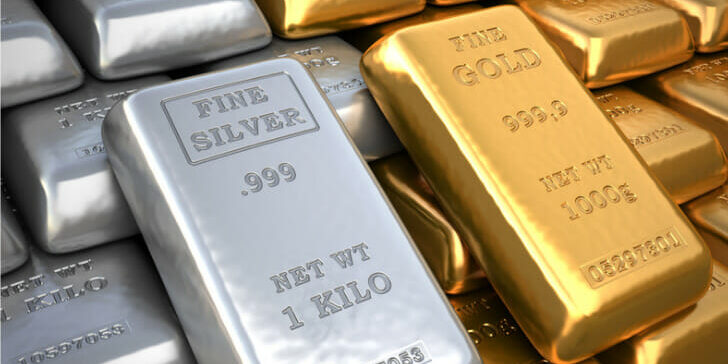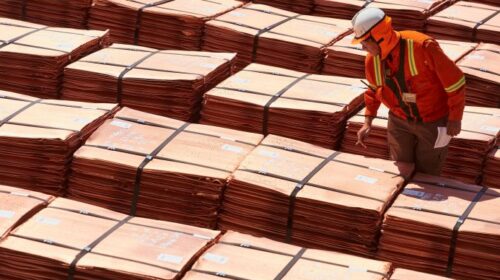Gold and silver to shine again in 2024
Gold hit an all-time high in 2023, dragging silver up with it and experts see little reason why its upward progress should falter in the coming 12 months. Traditionally, gold is on the other end of a seesaw with the US dollar.
The established wisdom is if the US currency strengthens, gold’s value drops and vice versa, a pattern played out pretty much to the letter in 2023.
Gold dipped when interest rates were rising in a US central bank bid to curb inflation, pushing the dollar higher.
As soon as the market started to factor in a drop in consumer prices (and thus lower interest rates), the dollar fell and gold pushed on to its new high.
What was less expected was the continued heavy buying of gold by emerging country central banks.
Russia and China were perhaps predictably at the head of the queue given their worsening relations with the US.
A host of other countries too built up their gold stocks, possibly worried as well as about sanctions if they chose the wrong partner.
AJ Bell’s Laith Khalaf noted: “It’s ended up being a positive year for gold with double digit dollar returns.
“However the weakness of the dollar has helped propel the price upwards, and as a result returns for UK investors in sterling terms are running at about half that of dollar returns, at 6% or so for the year before charges.
“Again, interest rate policy has been a key factor in gold pricing. The prospect of falling interest rates, especially in the US, is a tailwind for gold as they represent a reduction in the opportunity cost of holding the precious metal, which pays no income.”
On a note of caution, Khalaf points out that gold is not always the safety net the headlines purport.
“From its peak in 1980, the gold price fell by 33% over the next 20 years, and it took 27 years for gold to reach its former high. That’s a long period in the wilderness.”
As you might expect, the World Gold Council (WGC), the industry’s trade body, is more bullish and in its end-of-year review highlighted that geopolitical risks abound.
In 2023, it points to two significant event risks – the SVB bank failure and the Israel /Hamas conflict – with the WGC estimating that these added between 3% and 6% to gold’s performance.
This year, the Council notes that there are major elections taking place globally, including in the US, the EU, India, and Taiwan, which will encourage hedging of political risks.
More importantly, the WGC expects central bank buying to continue, which will act as a huge prop to the metal’s price.
“Purchases by official institutions have helped gold defy expectations over the past two years,” it said.
“In 2023 we estimate that excess central bank demand added 10% or more to gold’s performance.
“Even if 2024 does not reach the same highs as the previous two years, we anticipate that any above-trend buying (i.e. more than 450–500t) should provide an extra boost.
“Furthermore, the probability of a recession is not insignificant. From a risk-management perspective, this would provide strong support to the case of maintaining a strategic allocation to gold in the portfolio.”
That should be good news for the gold price, according to analysts at Deutsche Bank.
They recently nudged up their price forecast on the basis that the US Federal Reserve starts its interest rate easing cycle in the middle of 2024 and buying of the metal by central banks continues.
“We expect gold to end next year at a quarterly average of US$2,150/oz, with potential to trade above US$2,200/oz.”
That compares to US$2,039 an ounce at the time of writing.
Geopolitical issues, too, are likely “to simmer in various forms” as background support for gold, with the elections in Taiwan and the US adding to the mix.
“Emerging country central bank buying is the most enduring and direct linkage between geopolitics and gold,” said the bank, in that the metal can provide a form of insurance against possible sanctions on central bank assets.
Silver to continue its recovery
While gold has been making the headlines, quietly in the background its junior cousin silver has been trotting along in sync and is up 17% since October to US$24.35 an ounce.
Deutsche Bank said it is bullish to US$26/oz in the fourth quarter and US$27/oz in 2025.
“We see silver as one half of a contrasting secular picture for the precious metals and energy transition.
“Silver benefits from rising photovoltaic demand where an increasing pace of annual installed volume continues to outweigh the impact of thrifting.
“Also, electronics silver demand is set to rise as semiconductor supply chains improve and sales rebound.
“As a result, we expect silver undersupply to continue in a significant magnitude, about -13% to -14% of the market in 2024 and 2025.”
86 total views , 1 views today





